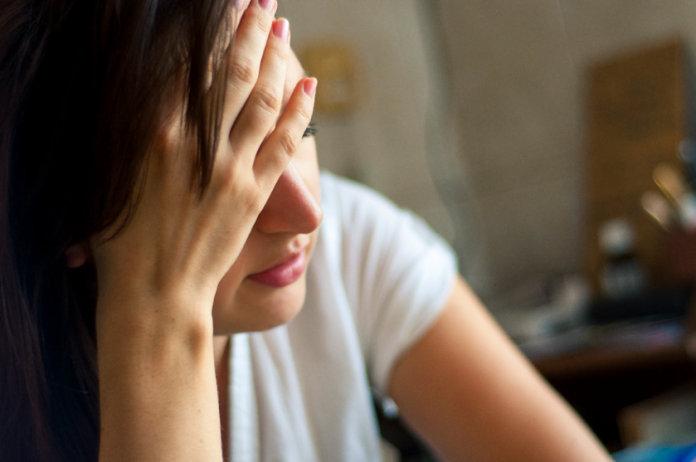
If you think about what triggers a migraine, what are the first few things that come to mind? Bright or flashing lights? Lack of sleep? Coffee and caffeine? Chocolate? These are common migraine triggers, but not every migraine sufferer is bothered by these factors. So if these are off the table, the question becomes, what else could it be?
For the approximately 18 percent of American women and 6 percent of American men who experience migraines, this can be an all-important question. If you or a loved one is a migraine sufferer and you have identified the triggers, this is first great step toward dealing with this debilitating condition. However, many individuals are still looking for the one or more underlying triggers for their severe head pain.
It’s entirely possible one of the more uncommon factors listed below could be a trigger for your migraine. What do you think?
Read about how to soothe migraines with qi gong and nutrition
Catch-up sleep. It’s not uncommon in this day and age to not get enough sleep, so catch up sleep can be a great way to remedy that, right? Wrong-at least for some people who suffer with migraines. Sleeping in on weekends or other days off can actually trigger migraines in some people. Migraineurs need to maintain a steady go-to-bed and get-up routine seven days a week.
Electronic devices. Many people feel they can’t live without their electronic devices-smartphones, laptops, tablets. Yet the blue light emitted from these devices, especially when you expose yourself to them around bedtime, can trigger migraines. If there is no tearing yourself away from checking your phone or tablet at night, then at least wear digital screen protection glasses (they work well!).
Patterns. Have you ever looked at a patterned sofa, dress, rug, blanket, shower curtains, or painting and felt a little dizzy? For some people who get migraines, some visual patterns such as checks, lines, squiggles, or circles can overstimulate the occipital cortex in the brain and trigger headaches. It’s best to choose simple designs for items in your home, including your furniture, bed linens, and rugs.
Delayed stress response. It makes sense that someone might experience headache pain while in the midst of a stressful situation, such as a overwhelming work environment, caring for a loved in who is ill, or looking for a job. Yet some people actually experience a migraine once the stressful situation has passed. Such migraines are sometimes referred to as let-down or weekend migraines. They appear once the stress has passed and the individual can finally relax.
If you want to help prevent such a migraine trigger, try to practice stress-reduction measures and follow a healthy lifestyle during the stressful event. This effort can help prevent the dramatic difference in how the body is during the stress-elevated stress hormone (cortisol, adrenaline) levels, heightened sense of awareness, on edge-and after when you can finally let go and relax.
Sudden changes in temperature or pressure. Not all headache and migraine experts agree that dramatic changes in temperature or barometric pressure can trigger migraines, but many do. Recognizing if either of these natural triggers are true for you can at least allow you to make plans or adjustments in your life to reduce these risk factors. For example, traveling by airplane may trigger migraines, so alternative plans may be needed. Ear plugs and hearing aids are available that can help regulate ear pressure and prevent migraine. Also try to be prepared with appropriate clothing for big changes in temperature.
Certain food additives. Some foods contain substances that have been shown to trigger migraines. Why these ingredients set off a migraine in some people and not others is not completely understood. Two substances identified as triggers are tyramine and phenylethylamine, two amino acids found in various foods, such as aged or fermented cheeses (blue, Brie, cheddar, all hard moldy cheeses), nuts, citrus, soy foods, and vinegar. Other food additives that may trigger migraine include aspartame, monosodium glutamate and its many names (e.g., yeast extract, hydrolyzed or autolyzed yeast, hydrolyzed vegetable protein (HVP), hydrolyzed plant protein (HPP), sodium caseinate, and kombu extract), sulfites (found in dried fruit and wines), and nitrites (found in processed meats).
Keep a headache diary to help you identify whether food or food additives are triggering your migraine. Write down everything you eat and when you experience migraine pain, then look for patterns.
Read more about food additives
Sleep apnea. People with sleep apnea experience a blocked upper airway while they sleep, and they stop breathing for a period of time. Because their access to oxygen decreases, they are susceptible to developing a migraine. If you suspect sleep apnea may be a cause of your migraines, have someone watch you sleep or look into a sleep clinic to determine if you stop breathing during the night. Sleep apnea can be treated without medication.
Some medications. Among the common medications that may trigger migraine are oral birth control pills and antidepressants. The synthetic estrogen and progesterone in oral contraceptives can help balance a woman’s hormones but for some they also lead to a migraine.
In addition, some antidepressants, including SSRIs, are frequently prescribed to treat migraine, but some migraineurs are triggered by these drugs. In both cases, women should talk to their healthcare provider about making medication adjustments.
Sex. Any type of vigorous or intense physical activity may trigger migraine, and that includes sex. Two types of sex headaches have been identified: pre-orgasmic and post-orgasmic. For those who experience sex headaches, one natural solution is to let your partner do much of the physical “work” during sex. Unfortunately, most ways to deal with sex headache involved medications.
Sources Boyles S. Orgasm can bring bad headache. WebMD. 2002 Oct 30




